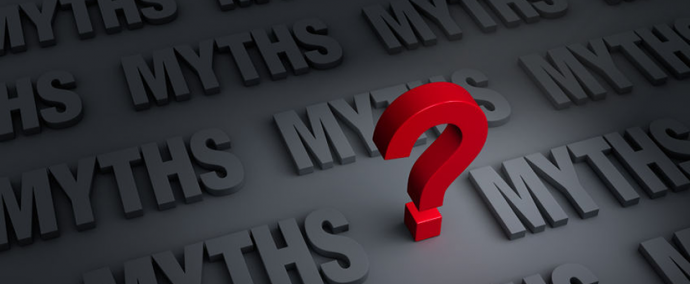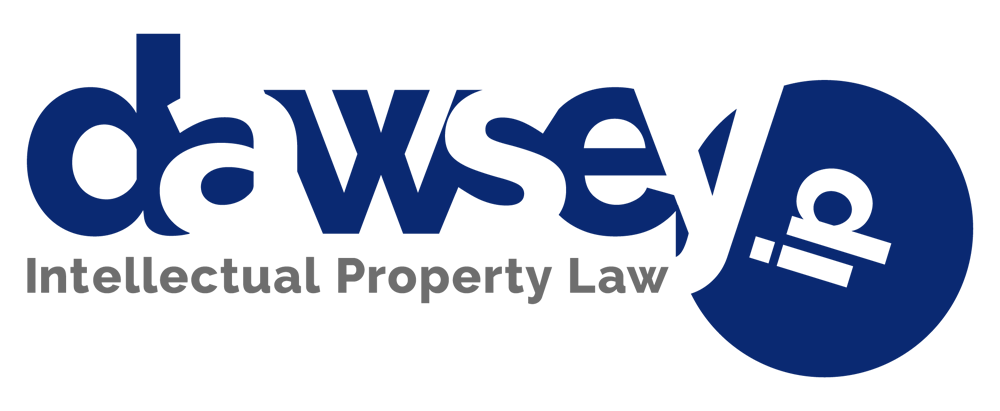
Common Copyright Myths
© 2008, Dawsey Co., LPA
September 2008
Introduction
Under the law of copyright as defined in U.S. Code, Title 17, the government gives an author of an original work exclusive intellectual property rights for a limited time. Once the statutory period has passed, the work enters the public domain.
Property rights are often described as a bundle comprising individual sticks. One stick may represent the right to possess the property. Another stick may represent the right to transfer ownership of the work, the right to reproduce the work, or the right to prevent others from using the author’s work. The holder of the copyright may pull a stick out of his or her bundle and transfer that right to another. For example, the copyright holder can give another permission to use, distribute or perform their work, while still retaining other rights for themselves.
The creation of personal computers and the internet ushered in the era known as the “Information Age.” Never before in history has the reproduction and distribution of information occurred with such ease and with little to no cost. As a consequence, copyright infringement has also increased with the ease of reproduction and distribution. Furthermore, the advancement of technology creates new copyright infringement stumbling blocks for the unwary. To make matters worse, common copyright myths circulate within the internet community; which if followed, could end in disaster.
Copyright Myth No. 1 – In order for a work to be copyrighted, it must be registered with the United States Copyright Office.
Copyright protection starts immediately once a work is fixed. The author does not need to register, publish or even put a copyright notice on the work in order to obtain copyright protection.
Registering a work with the Copyright Office does have overwhelming benefits. For example, an owner of a copyright must register the copyright with the Copyright Office before they can bring suit. If an owner of a copyright registers before or within five years of publication, the act of registration is treated by the court as preliminary evidence that the copyright is valid. Furthermore, if the owner registers the work before infringement or within 3 months after publication, the owner may bring a request for attorney fees and statutory damages. Failure to register before infringement bars a request for attorney’s fees and statutory damages and the owner is only awarded actual damages caused by the infringement. Actual damages can be hard to prove and are often less than the statutory damages that may be available.
Copyright Myth No. 2 – Only United States Citizens are protected under U.S. copyright laws.
All unpublished works are entitled to copyright protection without regard to the author’s nationality, or domicile. However, the works must meet a minimum requirement to be eligible for copyright protection in the United States. Meeting any of the following conditions establishes the minimum requirements. If one or more of the authors is a U.S. citizen, resident, or a stateless person on the date of the first publication, they are entitled to copyright protection. An owner that publishes their work first in the United States or in a country that is a party to an international agreement is entitled to copyright protection.
Copyright Myth No. 3 – If a work does not have a copyright notice, permission is not needed to use the work.
At one time, copyright protection required a copyright notice. On March 1, 1989, however, the United Stated joined the Berne Convention. Inclusion of a copyright notice became subject to the copyright owner’s discretion and copyright protection also became automatic upon fixation of the work. Consequently, the lack of a copyright notice does not indicate the work is in the public domain.
Copyright Myth No. 4 – A work’s copyright notice indicates if it is still enforceable.
Not necessarily, if a work was published in the United States during the years of 1923 through 1963, the owner was required to renew the copyright every 29 years. Failure to renew resulted in the work entering the public domain. To determine if a work is in the public domain, copyright renewal records must be examined if it has a copyright notice that is dated between the years of 1923 and 1963. Therefore, a work’s copyright notice does not necessarily indicate whether the work is still protected under copyright law.
Copyright Myth No. 5 – A person can obtain a copyright on a public domain work by republishing or repackaging the work.
Once a work goes into the public domain, it belongs to everyone. A person making a compilation, repackaging or republishing of a public domain work can only obtain a copyright on the new matter that they create and add; the original public domain work remains in the public domain.
Copyright Myth No. 6 – All out of print books are in the public domain.
When a book is “out of print” it means that it is simply not being sold anymore. The owner still has the right to republish the book, sell the rights to the work or simply do nothing with the book. The book’s status of being out of print does not destroy the owner’s copyright protection covering the book.
Copyright Myth No. 7 – As long as credit is given to the original author, no copyright infringement occurs.
Giving credit to the creator of a work does not circumvent the creator’s other rights in a copyrighted work. There are many rights (sticks) in the bundle of copyright property law. The right to recognition is only one right (stick). The owner still has the right to determine how their work is going to be used, who can use it and the right to monetary compensation. Giving the original author of a copyrighted work credit does not negate their other rights. In order to use someone else’s work, you must obtain permission.
Copyright Myth No. 8 – It is okay to use another person’s work as long as no commercial gain occurs.
Copyright infringement does not depend on commercial gain! Just like in Myth No. 7, you must obtain permission to use another person’s work. If you do not, you have committed a copyright infringement. However, achieving commercial gain by infringing another’s copyrighted work can increase the amount of damages awarded by the court
Copyright Myth No. 9 – Works found on the internet are in the public domain.
Many wonderful public domain works are available on the internet, but not all works on the internet fall into this category. Don’t fall for this fallacy. Works are not put into the public domain simply because they have been published on the internet. Works fall into the public domain by being no longer protected under copyright, or if the author expressly put the work into the public domain.
Copyright Myth No. 10 – Once a person posts a video on a video broadcasting site, it enters the public domain.
Similar in nature to Myth No. 9, posting a video on a video broadcasting site does not put a work into the public domain. However, some sites may require a license in exchange for the right to publish the work on their video broadcasting site. This license may give the owners of the site certain rights to use your work, such as sublicensing to others, or making derivative works of your work. Generally, you still own the copyright to your work, and once you remove it from the video broadcasting site, the license expires within a commercially reasonable time.
Copyright Myth No. 11 – Linking to graphics on other websites does not constitute copyright infringement.
Many are fooled by this fallacy! One stick in the bundle of copyrights is the right to determine how a work is used. Even though linking does not copy the graphic onto a particular server, the “linker” maybe using another’s work and server resources. Again, use of another’s work without permission equates to infringing their copyright.
Copyright Myth No. 12 – Fair use exempts me from the application of copyright law.
The legal term “Fair Use” has caused much confusion not only with the public, but with copyright holders as well. Copyright law was created to give an author of an original work exclusive right to it for a limited time. Once the statutory period expires the work enters the public domain.
The government foresaw the need for some exceptions to allow leeway for educational use, parody, commentary and research. As a result, congress passed the fair use doctrine, under the Copyright Act of 1976 as 17 U.S.C. Section 107. The fair use doctrine permits some copying and distribution without permission from, or payment to, the copyright holder. However, fair use is limited to short excerpts from the original work, and usually includes giving the original author credit. In order to determine if a use of another’s work falls under the fair use exception, the court will look at: (1) the purpose and character of the use; (2) the nature of the copyrighted work; (3) the amount and substantiality of the portion used in relation to the copyrighted work as a whole; and (4) the effect of the use upon the potential market for or value of the copyrighted work. Only the expression and structure of a work can be copyrighted. Consequently, facts and ideas cannot be protected by copyright. Overall “Fair Use” is a very limited defense that is unsuccessful far more often than not.
Additionally, other restrictions exist if the work is protected by a digital rights management (DRM) system. Under the Digital Millennium Copyright Act (DMCA), circumvention of a DRM system is prohibited regardless of the fair use exception.
Conclusion
Copyright is meant to give an author of an original work exclusive intellectual property rights for a limited time, after which, the work enters the public domain. Many copyright fallacies circulate over the internet waiting to ensnare the unwary. Always get permission before using someone else’s work, and don’t assume that a work has entered the public domain. By taking a few precautions many future headaches can be avoided.
